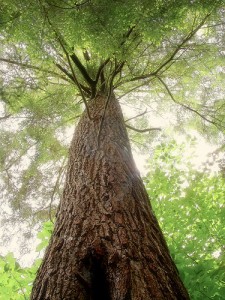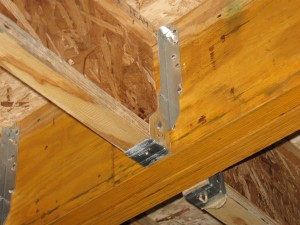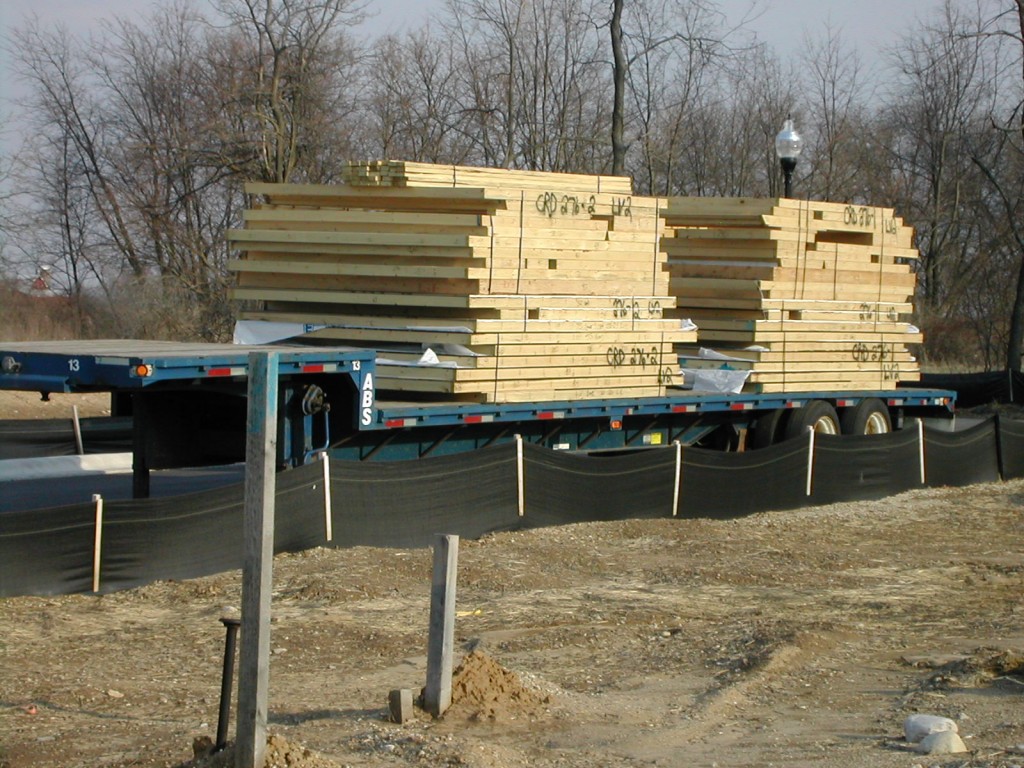Old Growth Lumber: Reduce and Save Money When Building
2 Comments | Posted by armchairbuilder in Owner-Builder, Save Money
In order to build a typical 1700 square foot wood framed home in the U.S., an equivalent of one acre of land needs to be clear cut to provide enough lumber. Alternatives to using old growth lumber for building materials are gaining ground every year. Not only are these alternatives good for the environment, but they can also save you significant money on your new owner built project.
Trusses: By using manufactured trusses to frame our roofs, we use smaller dimensional lumber like 2×4’s. This helps save old growth trees since we can eliminate the larger 2×8’s, 2×10’s and 2×12’s that were traditionally used for roof rafters. Using roof trusses save us time on our projects as well as the typical roof can be set in a day. Floor trusses (and I-joists) also save large dimensional lumber and can span greater distances. This allows us to open up our floor plans and eliminate interior support walls, while saving the old growth forests.
Finger-jointed Lumber By splicing smaller pieces of lumber together, we get what they call finger-jointed lumber. The finger jointed studs use smaller, recycled wood to make up longer, straighter pieces of lumber. The best part about the finger-jointed stud is that it stays straighter and shrinks less than conventional studs…and typically they cost less.
Oriented Strand Board Panels: Also known as OSB, these panels are made up of chips of wood that have been glued together. These small chips take the place of the larger, old growth trees while saving you on lumber costs. I just checked with my supplier… a sheet of 1/2″x4x8 OSB is $$7.40 versus the 1/2″x4x8 plywood at $14.47 per sheet. This amounts to a savings of about 50%. Is the OSB as good as plywood? I can tell you I have used OSB for roof, wall and subfloor framing for hundreds of homes and have had very few problems. I would definitely use OSB if building a home for my family today.
Laminated Beams: Rather than using large pieces of lumber for support structure, we can use laminated veneer lumber (LVL‘s). These LVL’s are manufactured from thin pieces of lumber that are glued together to form straight, high strength beams for the structure of your new project. Laminated beams can typically span greater distances for the same size beam.
Value Engineering: Another term for being efficient in the design of our homes, value engineering involves looking at the structure to eliminate any wasteful wood. It starts with designing your home on two foot modules to optimize use of lumber (most lumber comes in even lengths). This value engineering also locates windows and doors at two foot increments to reduce the number of studs used at rough openings (a.k.a. king studs and cripplers). We also eliminate headers (framing members on load bearing walls that carry weight from above windows and doors) with large dimensional lumber where they aren’t really needed (i.e. at gable end walls where there is no roof load and at interior non-load bearing walls). One last thing that we look at…spacing studs at 24″ on center where possible versus the standard 16″ on center.
Panelized Building Systems: Wall or floor panels that are built in a factory can help reduce waste when building your new home. Many of the plants that produce these panels use computers to generate the wall panel sizes. In doing so, they are able to maximize the use of the materials that make up the panels. Therefore, you reduce waste and theft on your project and in doing so, your budget is always accurate. In addition to the lumber saved, wall panels can give you a better quality product as they are built in a controlled environment. However, panel construction can cost more money up front. So, you may want to bid out your project both as stick-built on site and as panel built to see what the difference is in your area. This will tell you whether the additional cost is worth it for your particular project. If the cost difference is five percent or less, you may want to consider panels as they will save you money in waste, build time and theft.
You can save old growth trees by implementing the techniques we discussed here on your new owner-built project. It feels good to know your making a difference while saving money on your new building project.
2 Comments for Old Growth Lumber: Reduce and Save Money When Building
Question: Use Manufactured Floor Joists or 2x’s? - Armchair Builder :: Blog :: Build, renovate, & repair your own home. Save money as an owner-builder.- Armchair Builder :: Blog :: Build, renovate, & repair your own home. Save money as an ow | April 27, 2012 at 11:48 am
Manufactured House: How We Build Homes- Armchair Builder :: Blog :: Build, renovate, & repair your own home. Save money as an owner-builder. | July 23, 2012 at 8:17 am
[…] We like the idea of a home being built in a controlled environment and large pieces being put together on site. This keeps weather issues to a minimum and ultimately can lead to a better built home. Unfortunately, the costs are typically quite a bit more expensive than site built construction. For ideas to reduce construction costs on your next project using manufactured materials, check out this article on manufactured components. […]





[…] For more tips on saving money with engineered products, check out our post titled…Old Growth Lumber: Reduce and Save Money When Building […]